
Art Nouveau, Baroque, Gothic, Cubic…you can find marvelous examples of all these architectural styles and more in magical Prague.
Old Town Square
In this photo series, I focus on this beautiful and fascinating capital of the Czech Republic, starting with the magnificent Old Town Square – a market square since the 11th century and one of Prague’s top sites – a square we returned to many times day and night in our visit to Prague.
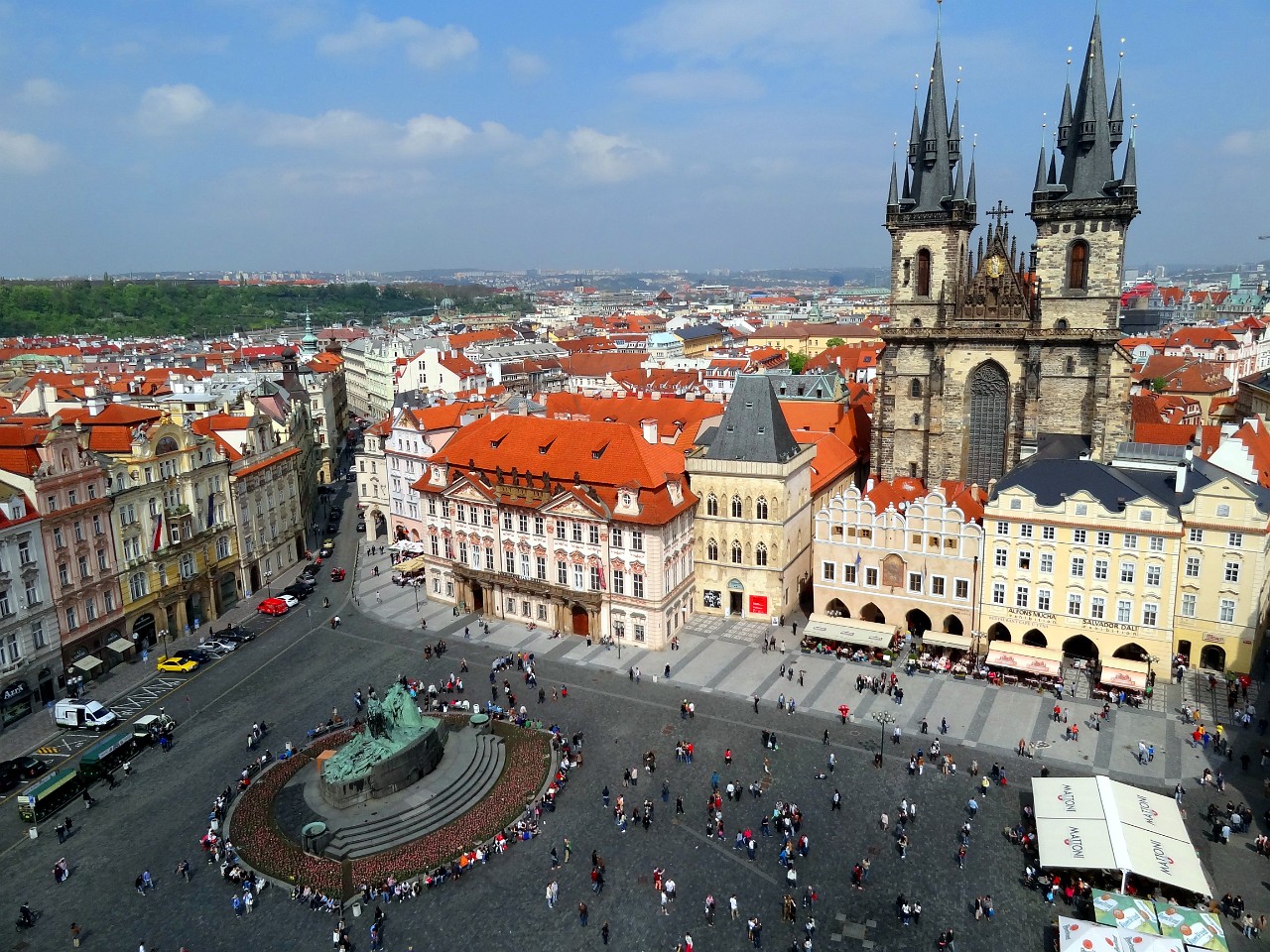
Old Town Square from the clock tower
Dominating this view of the square is the towering gothic Church of Our Lady Before Tyn, the main church of this part of the city since the 14th century.
Jan Hus Memorial
The huge Jan Hus Memorial at one end of the Old Town square commemorates Jan Hus, the influential priest and religious reformer who was burned at the stake in 1415 on the charge of heresy. He was before his time in protesting various Catholic religious practices and corruption before there was a religious branch called Protestants!
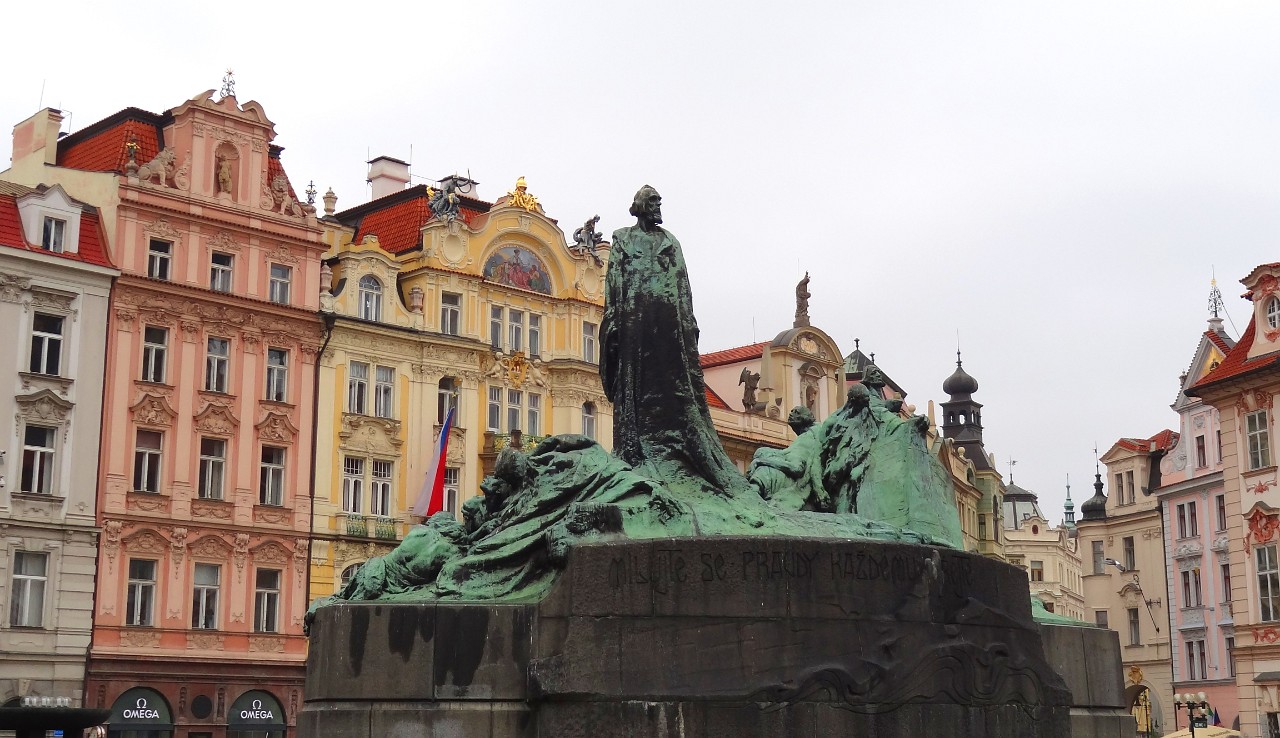
Jan Hus Memorial
After his martyrdom his followers, known as Hussites, rebelled against the Roman Catholic rulers who tried to kill them all through a series of crusades now known as the Hussite Wars. The Hussites won. The figure of Jan Hus gazes at the Church of Our Lady of Tyn, a Hussite Church for 200 years before the Catholic Habsburg’s defeated the Czechs in 1620. Big monument, big history!
Astronomical Clock
The must see sight in the Old Town Square is the beautiful medieval Astronomical Clock, one of the oldest and best preserved in the world. Before the hour strikes the crowd gathers to watch the quick show – ushered in with the animation of the 4 figures flanking the top clock, followed by a glimpse of each of the 12 apostles in the doors that open above.
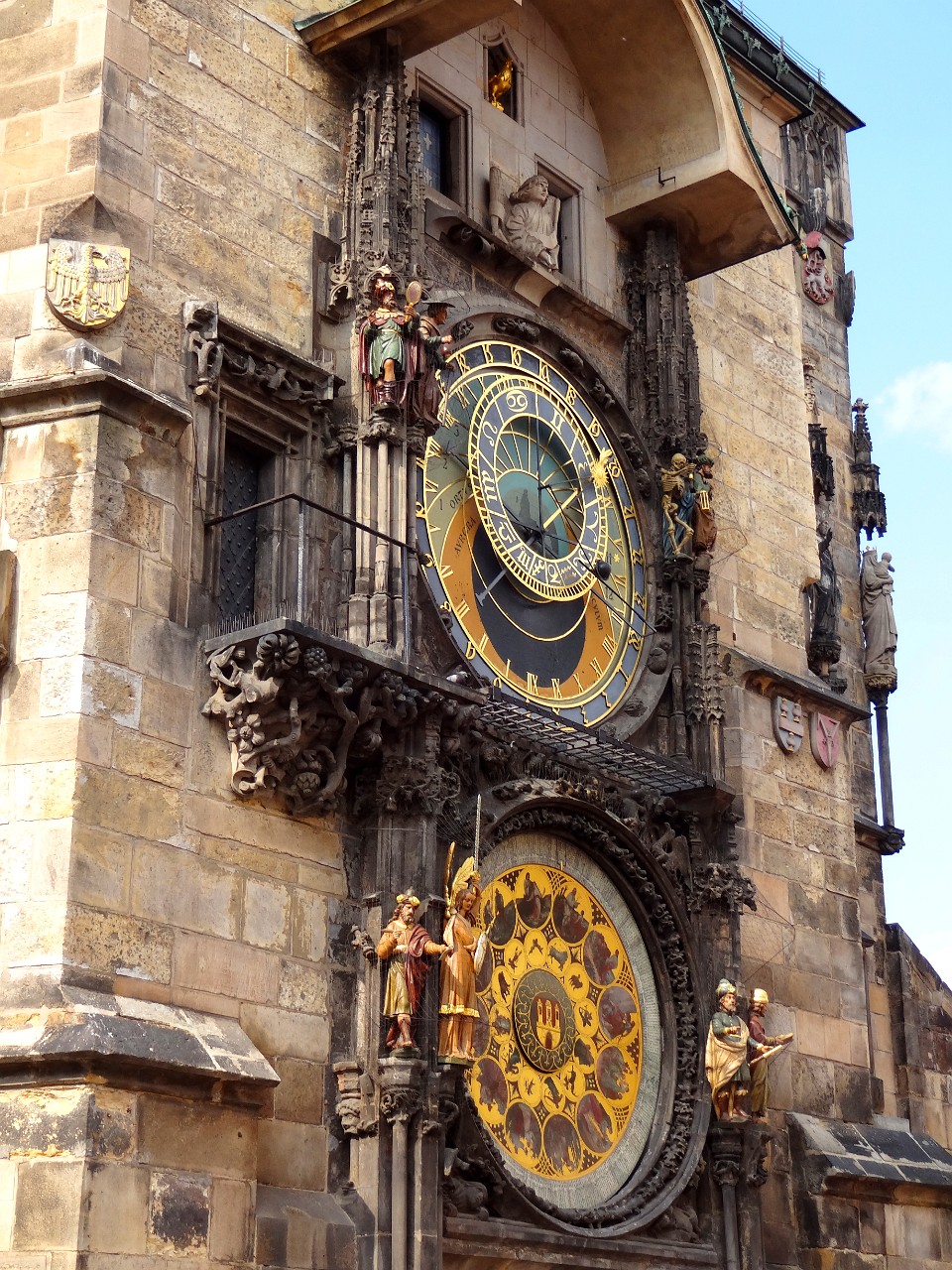
Prague Astronomical Clock
It’s a big tourist attraction but it’s really not much of a show and it’s over very quickly – to maximize your enjoyment don’t wait forever in the square way in advance, just wander by at the top of any hour to see it – but do it before February next year, the clock will be removed and renovated from February to June 2018. A great excuse to go visit Prague now, right?
Prague Castle
One of the top things to do in Prague is visit the Prague Castle quarter, it’s not a single castle but a huge complex with palaces, museums, churches, government buildings and the shining star of it all – the St. Vitus Cathedral.
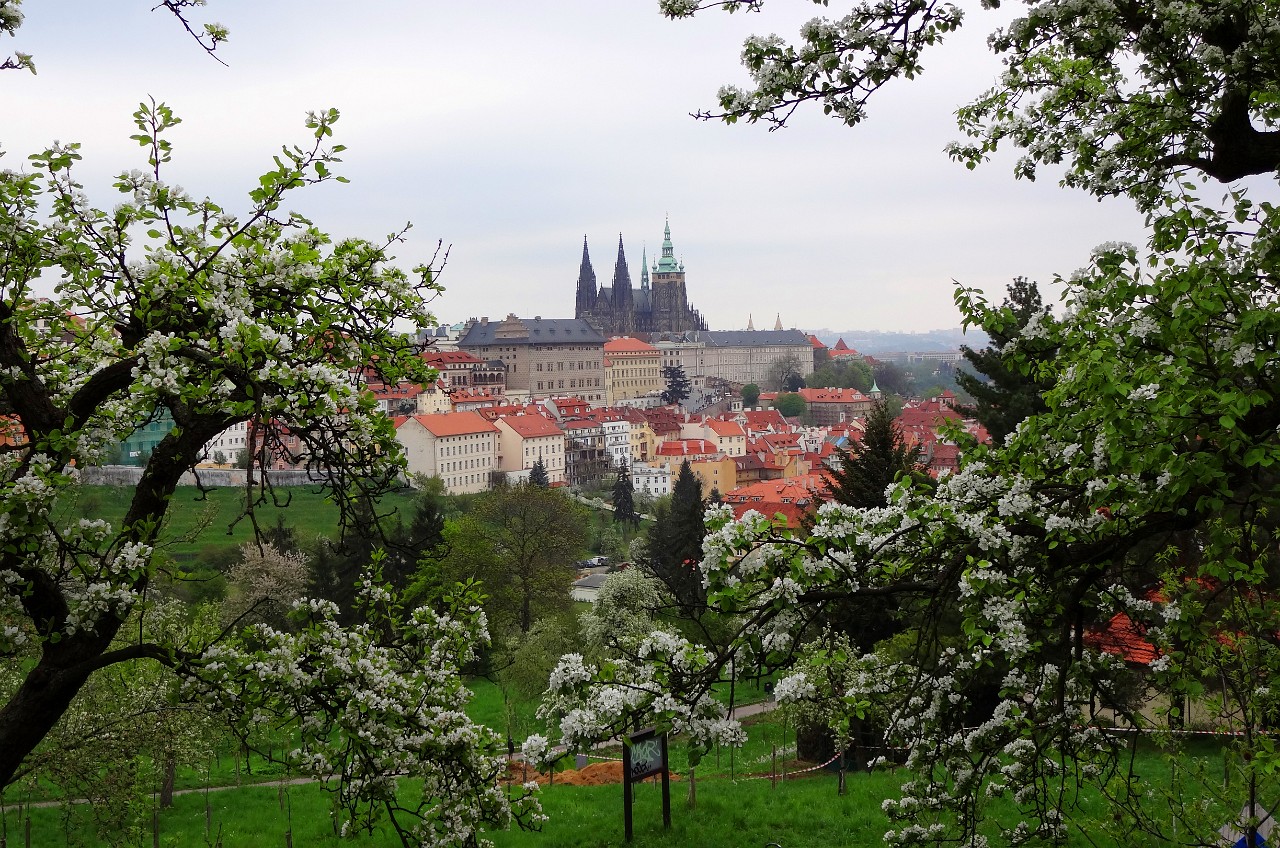
Prague Castle from walk to Petrin Tower
You can see the spires of the Cathedral above the palaces from the paths below the Stravhov Monastery, the second stop on our guided Castle Tour and the very top of the Castle District. It’s a long way from the river to the Monastery, it’ll save your legs (and time!) to hop on tram 22 to the top and walk down, seeing all the Castle sights on the way down.
Schwarzenberg Palace
Have you ever heard of sgraffito? Oh it’s a decoration all right, but the kind that is made by etching a pattern through layers and a fantastic example is the renaissance era Schwarzenberg Palace in the castle district.
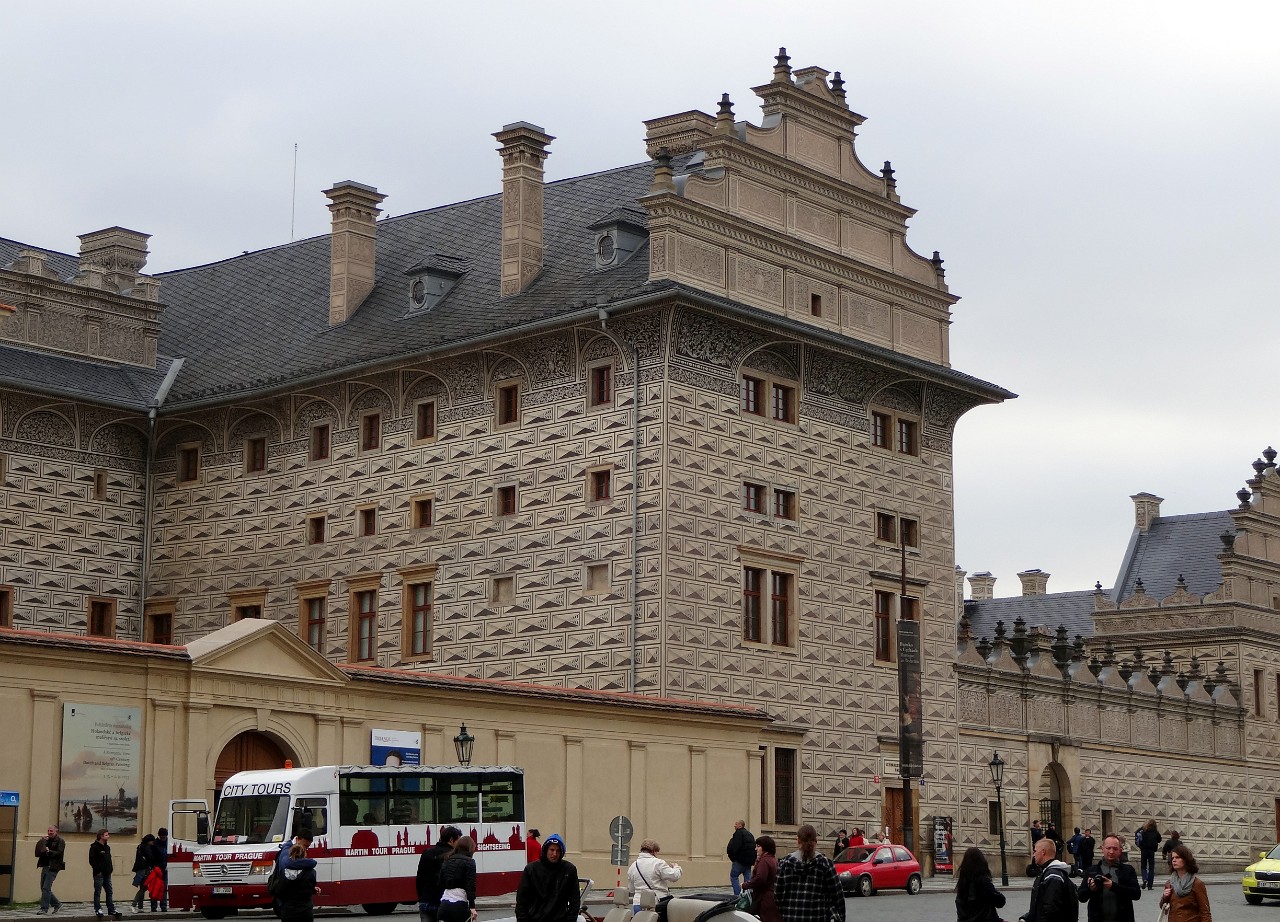
Schwarzenberg Palace
The walls look 3D (they’re not), but it’s the intricate sgraffito design at the roofline that I just love. This is the first place I ever saw this beautiful decorative technique, have you seen it anywhere?
Spanish Synagogue
Did you know that the Synagogues in Prague weren’t destroyed by the monster Hitler? He spared them and allowed the Jewish community to collect and store treasures from synagogues in the occupied countries because he wanted to have a museum of the “extinct Jewish race” in Prague.
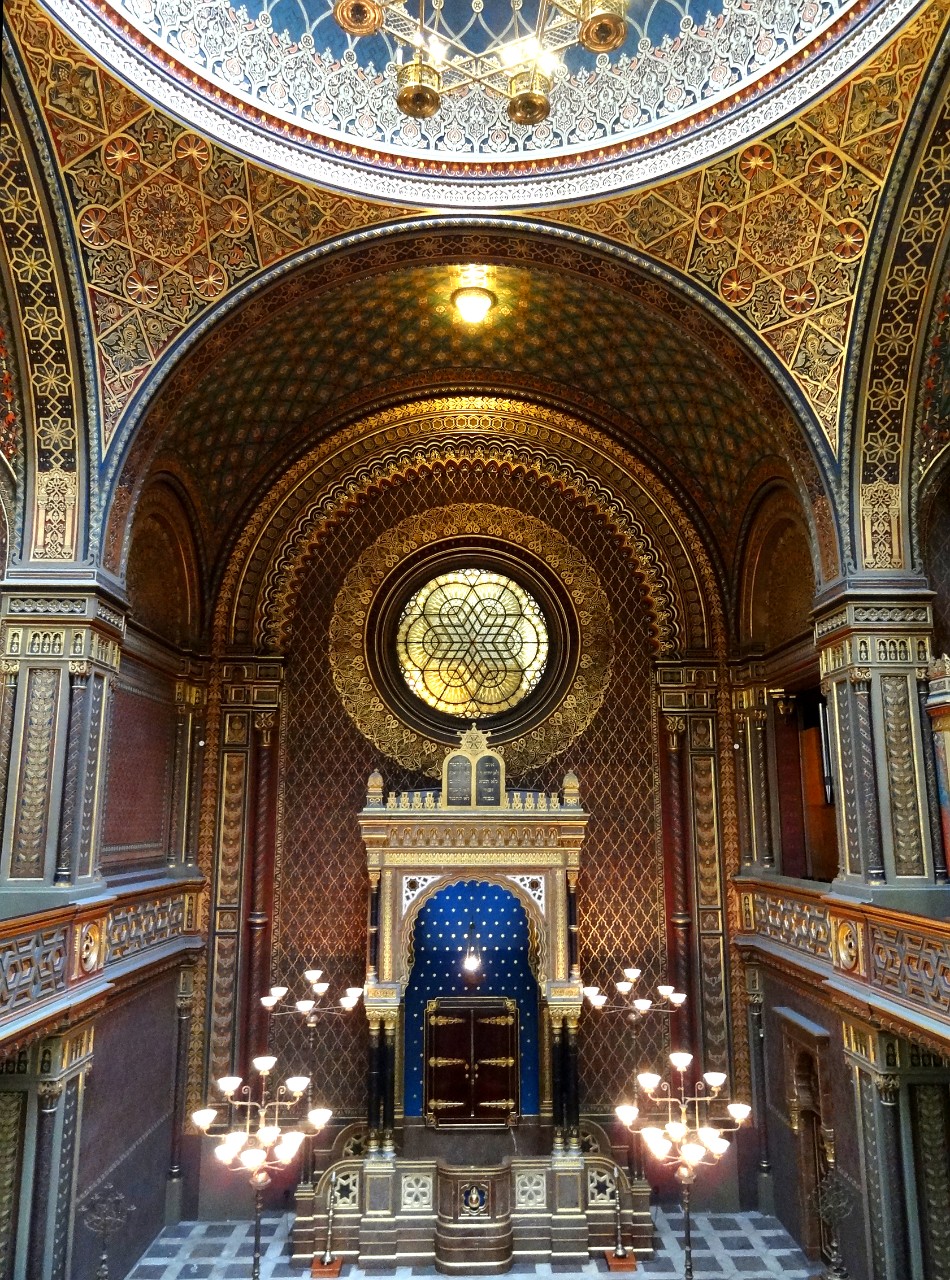
Spanish Synagogue
Well, the Jewish population was pretty much wiped out here as well as so many other places, but today the Jewish Community still exists and still runs the Jewish Museum that they had actually started long before WWII. The museum isn’t just the collection – it’s the historic Synagogues, buildings, and the Old Jewish cemetery as well as the collection of artifacts.
You don’t have to see it all in one day, a ticket to all of the Jewish Museum sights can be used over 7 days. We started at the Spanish Synagogue to see this beautiful golden interior.
Pinkas Synagogue
The second oldest synagogue in Prague is the modest Pinkas Synagogue, originally a house that was turned into a synagogue in 1535 by the owner, one of the distinguished Horowitz family. But it’s what’s inside this historic synagogue that makes this site profoundly moving.
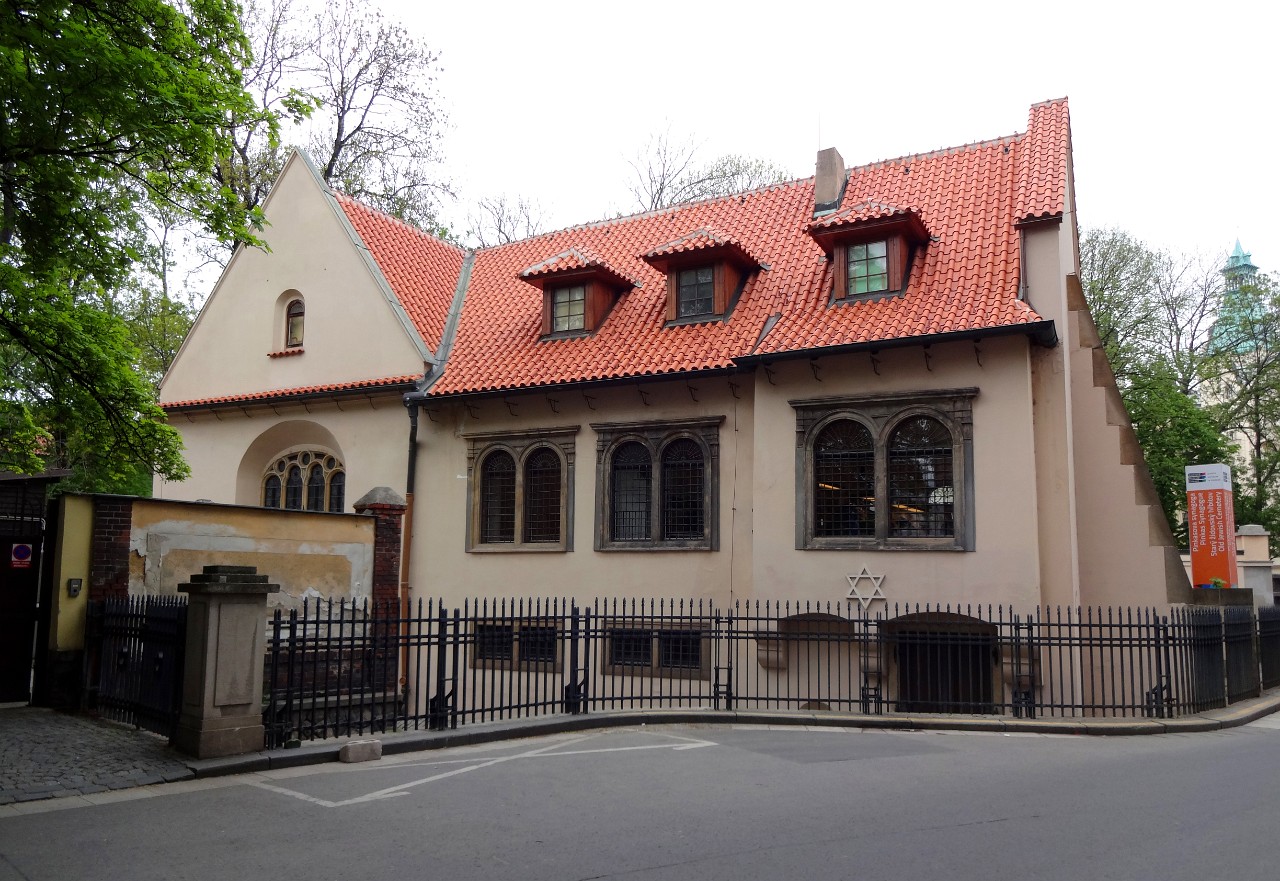
Pinkas Synagogue exterior
In the lower level of the simple interior of the Gothic vaulted space, the walls are covered with the names of nearly 80,000 Czech and Moravian Jews who were murdered in the holocaust. Created in 1955-60 it’s one of the earliest of its kind in Europe.
Upstairs is a permanent exhibition focusing on the artwork of the Jewish children who were incarcerated in the Terezin ghetto/concentration camp. The emotionally powerful drawings document the transports to Terezin, daily life in the ghetto, and dreams of returning home.
Old Jewish Cemetery
When you exit the Pinkas Synagogue, the one way route is through the Old Jewish Cemetery – the most important Jewish historical site in Prague as well as the oldest and largest Jewish cemetery in Europe!
Starting in the 15th century, it was in use for over 300 years and the only burial ground allowed for the Jews of Prague.
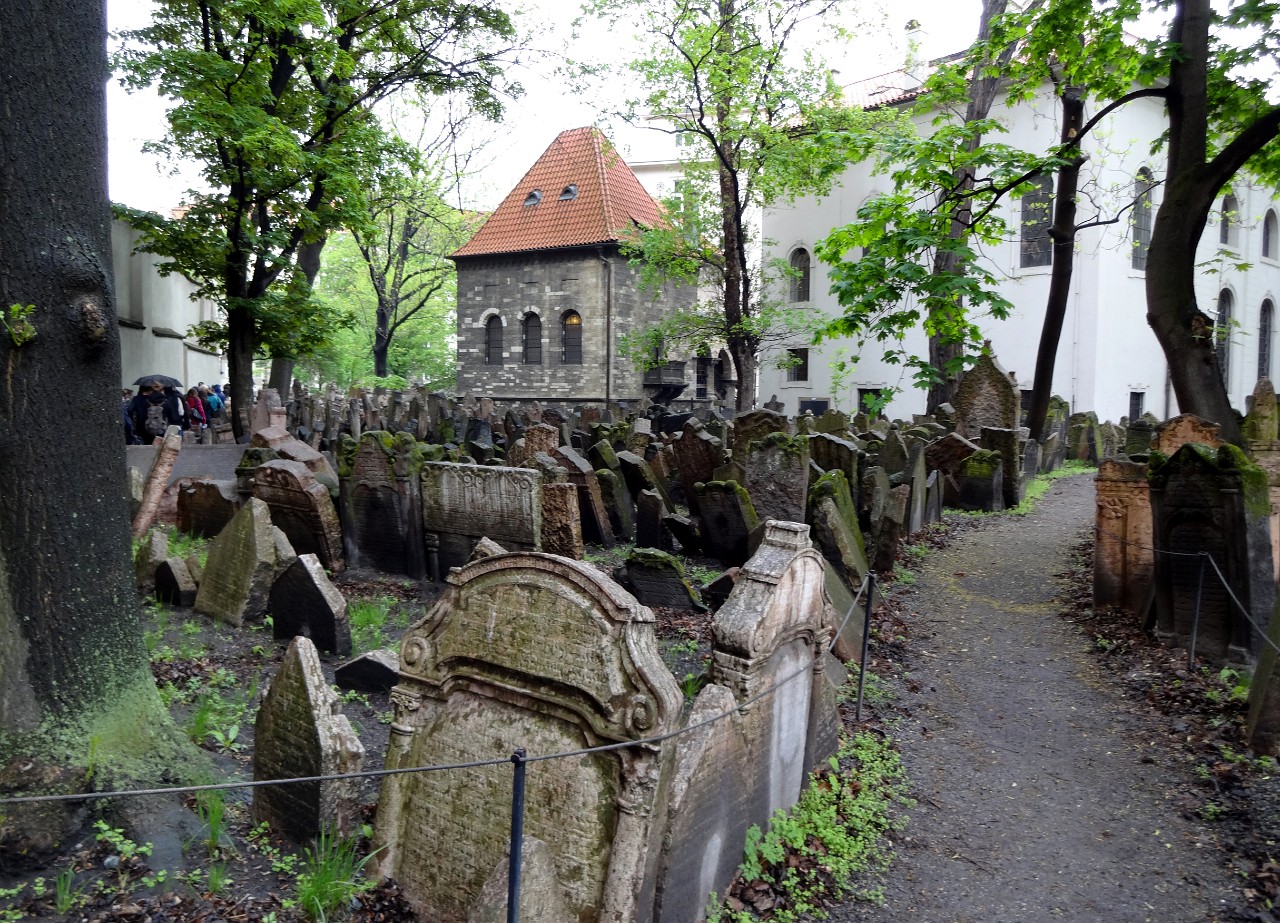
Old Jewish Cemetery
Occasionally they were allowed to buy space to expand, but it still wasn’t big enough. The solution? They expanded by adding more soil, preserving the earlier gravestones by either laying them over or raising them higher. For this reason you see the dense topsy turvy forest of gravestones everywhere on the elevated hills in the cemetery, some 10 layers deep.
Jewish Ceremonial Hall
The path through the cemetery ends at the Ceremonial Hall, an intriguing looking building built in 1906-08 in a strict Neo-Romanesque style to serve as the communities’ mortuary and place for the burial rituals. It was used for this purpose until 1926 when it became part of the Jewish Museum (Yep, the Jewish Museum of Prague is that old – even older – established in 1906!).
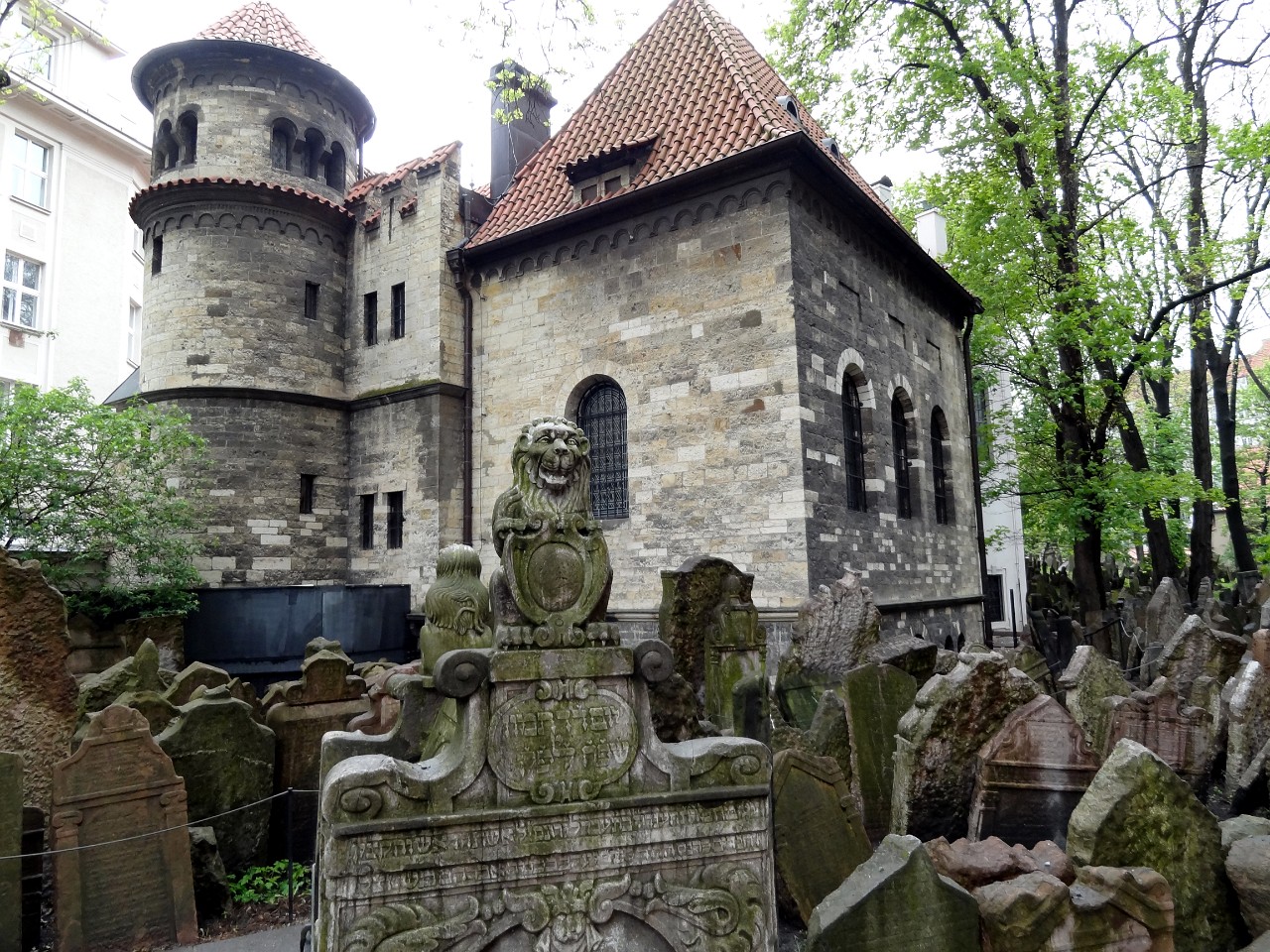
Jewish Ceremonial Hall
Inside are interesting exhibits on the history of the Prague Burial Society and Jewish funeral customs – all part of the Jewish Museum ticket. The style of the building really fits the cemetery, don’t you think?
Municipal House
Who loves Art Nouveau? If you do, you won’t want to miss a tour of the gorgeous interior of the Prague Municipal House where every detail is a feast for the eyes. This wonderful 1906-1912 Art Nouveau building is a cultural center with a concert hall, ballroom, and spaces for civic functions.
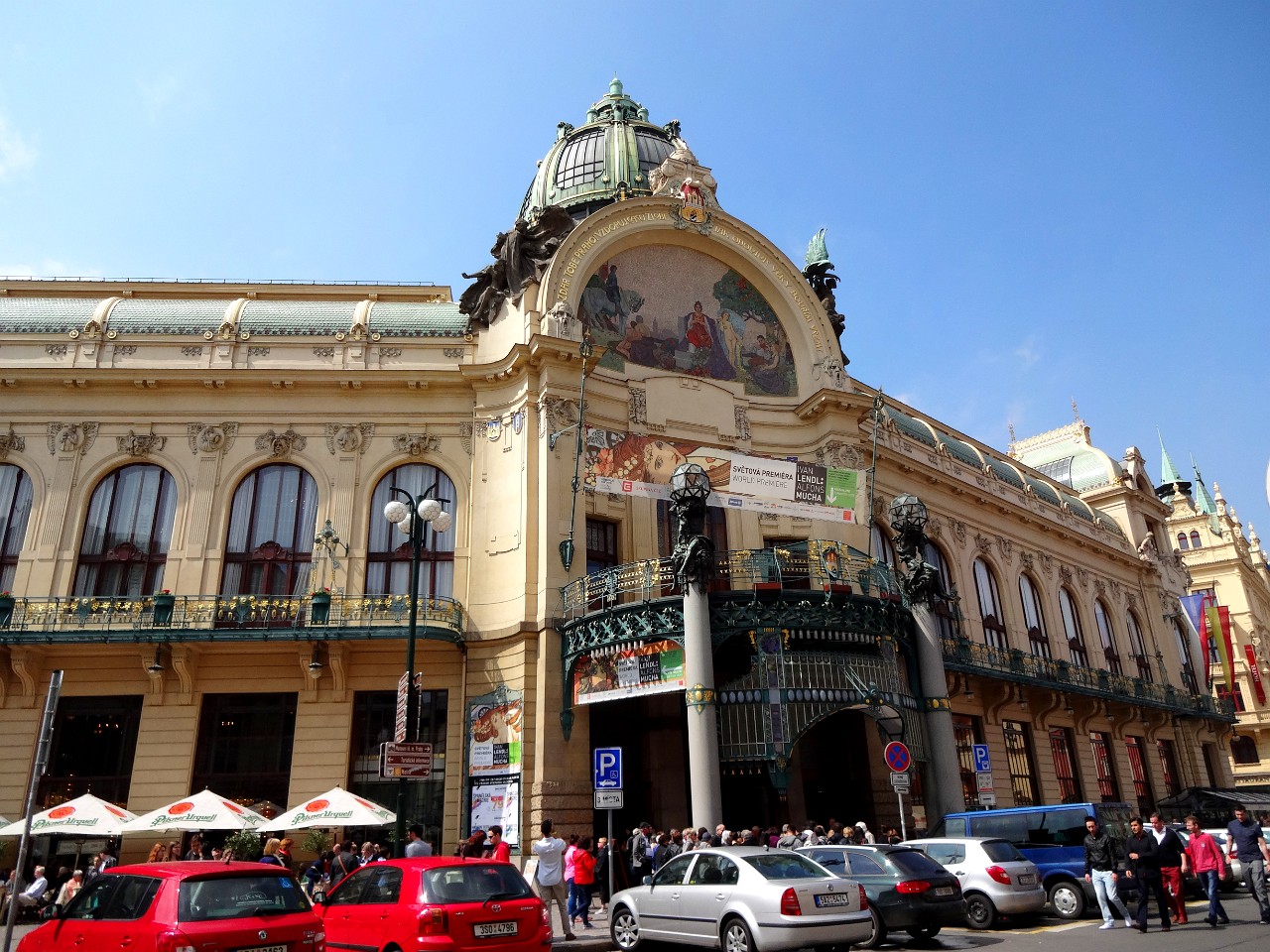
Municipal House
Worked on by around 30 leading artists of the day, it’s loaded with symbolism starting with the Homage to Prague mosaic above the entrance between sculptures representing the oppression and rebirth of the Czech people.
Jerusalem, or Jubilee, Synagogue
Have you ever seen a synagogue that looked like this? This is the Jerusalem Synagogue, also known as the Jubilee synagogue, built in 1906 in this marvelous Moorish Revival form of Art Nouveau.
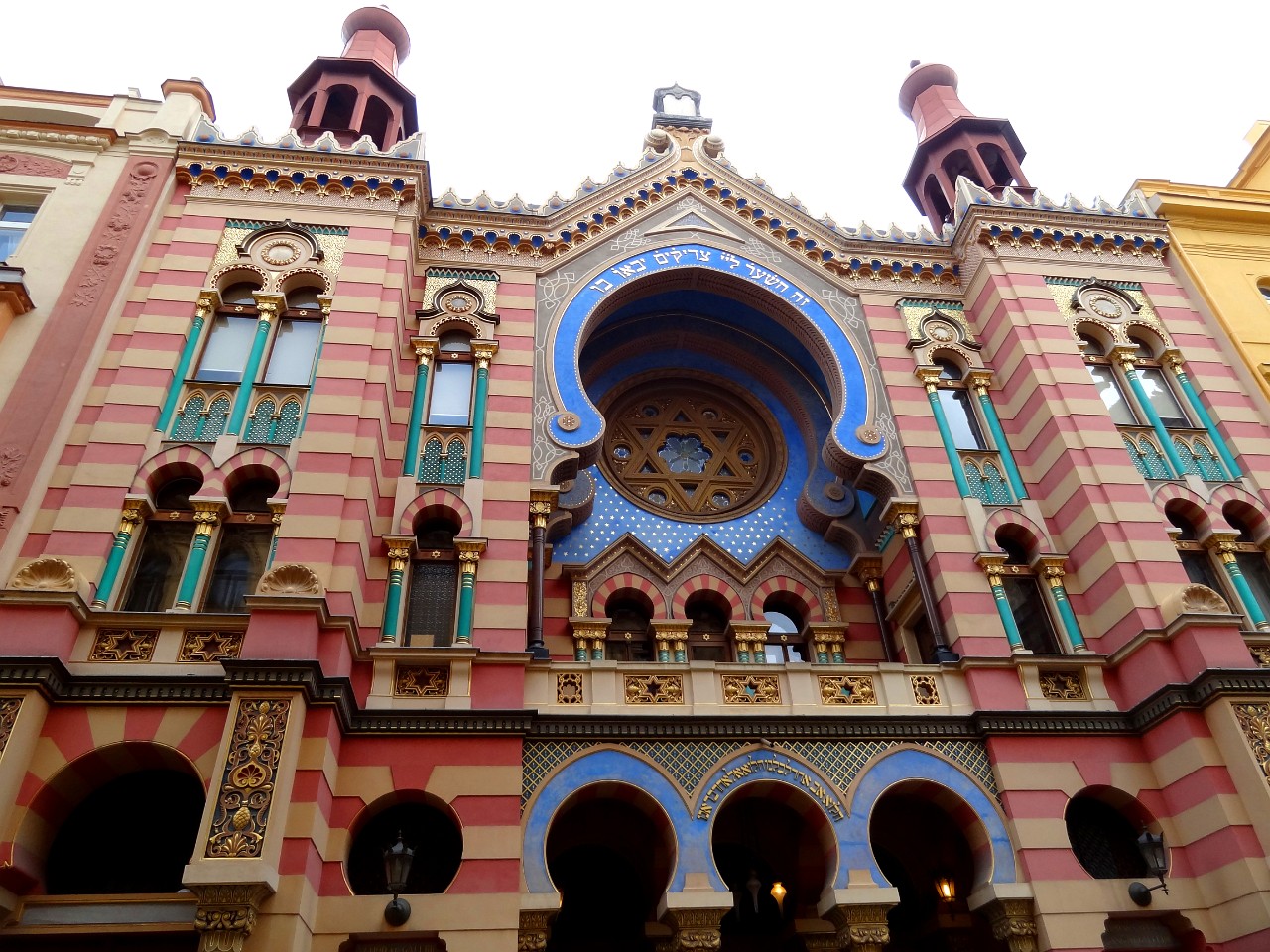
Jubiliee Synagogue
If you think the outside is spectacular, wait until you see the inside! The synagogue is still in use today, but you can visit it for just a few dollars fee. In addition to the fab interior, there’s a wonderful permanent exhibition upstairs that shows the postwar history of the Jewish Community of Prague through photographs, documents and film.
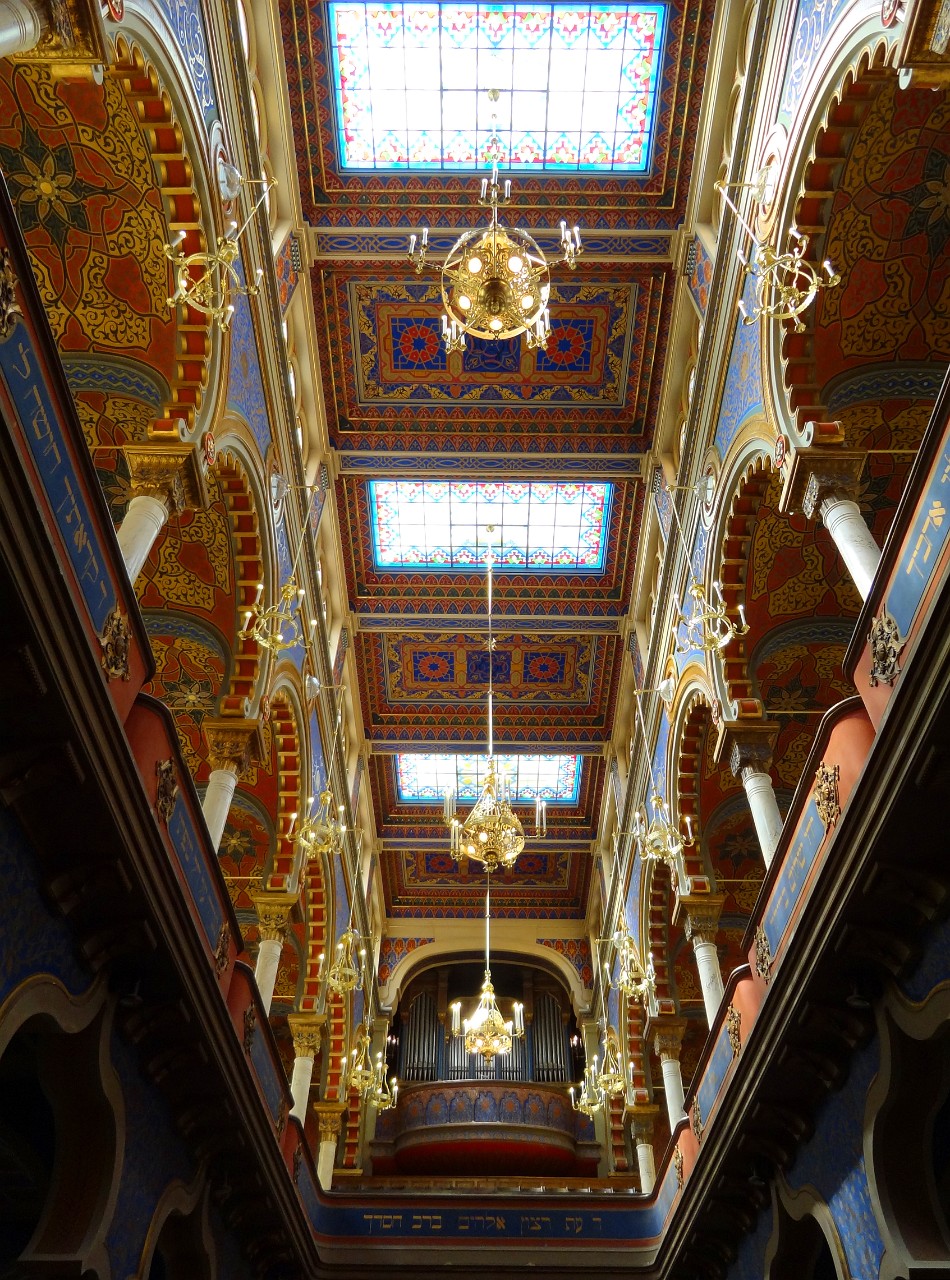
Jubiliee Synagogue ceiling
Looking up at the brilliantly patterned art nouveau painted ceiling of the upper gallery in the Jerusalem Synagogue, light filled from the windows and skylights in the daytime, I can only imagine how magical it must look at night lit by all those wrought iron chandeliers.
Old New Synagogue
Nestled among the pretty buildings in the center of the Jewish Quarter is the Old New Synagogue – Europe’s oldest active synagogue and the most important synagogue in Prague. Built in 1270, it’s survived the fires that periodically swept through the ramshakle Jewish quarter, and also the forced 19th century redevelopment of the ghetto which has given us the beautiful buildings in the quarter that we see today.
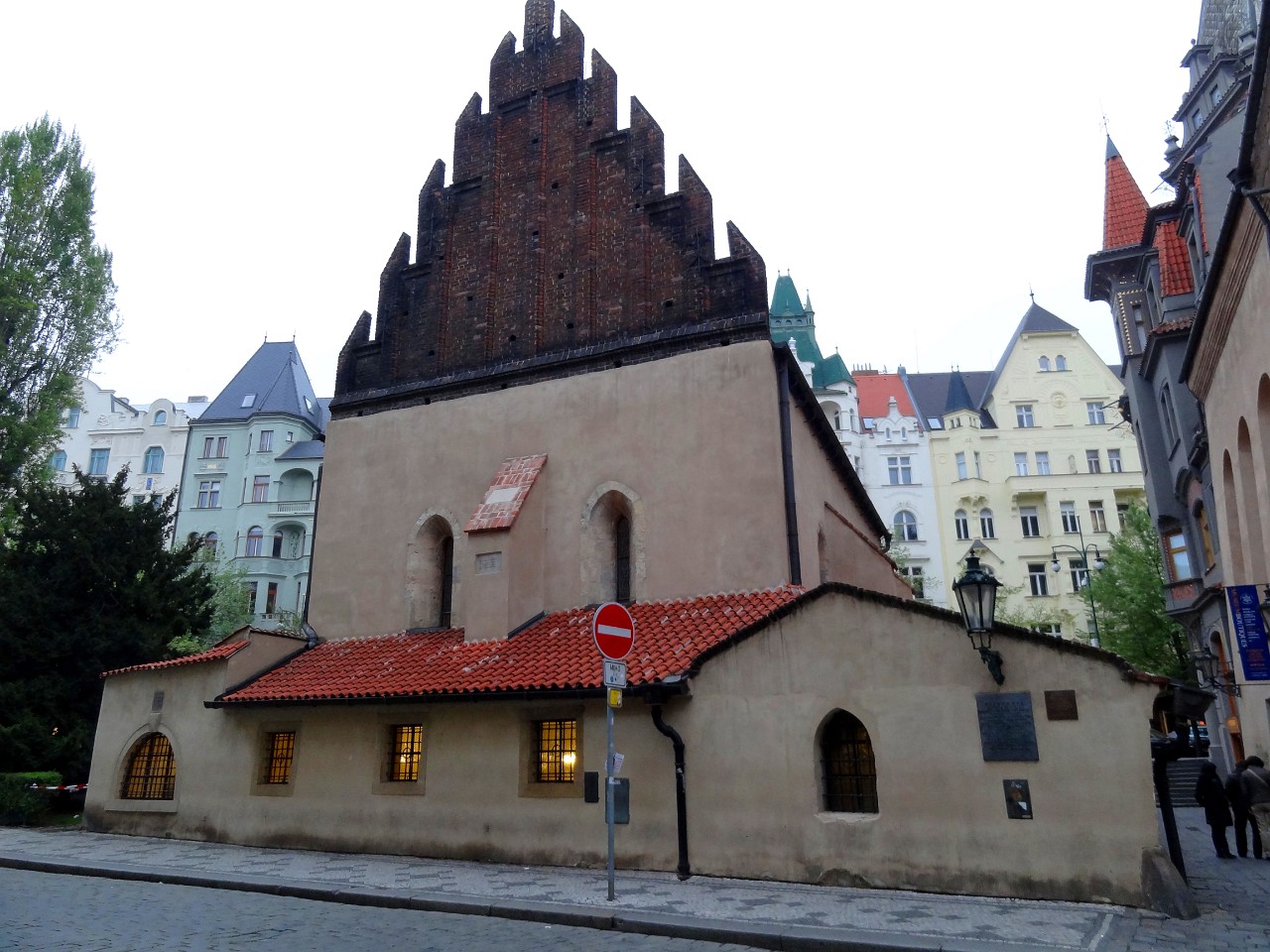
Old New Synagogue
Legends about this synagogue include how it got it’s name, and of the Golem of Prague which was confined in this synagogue’s attic. Fascinating history to explore in the Jewish Quarter!
Old Town Square Building Facades
Everywhere you look in Prague is one beautiful building after another, like this fantastically decorated Art Nouveau building in the Old Town Square.
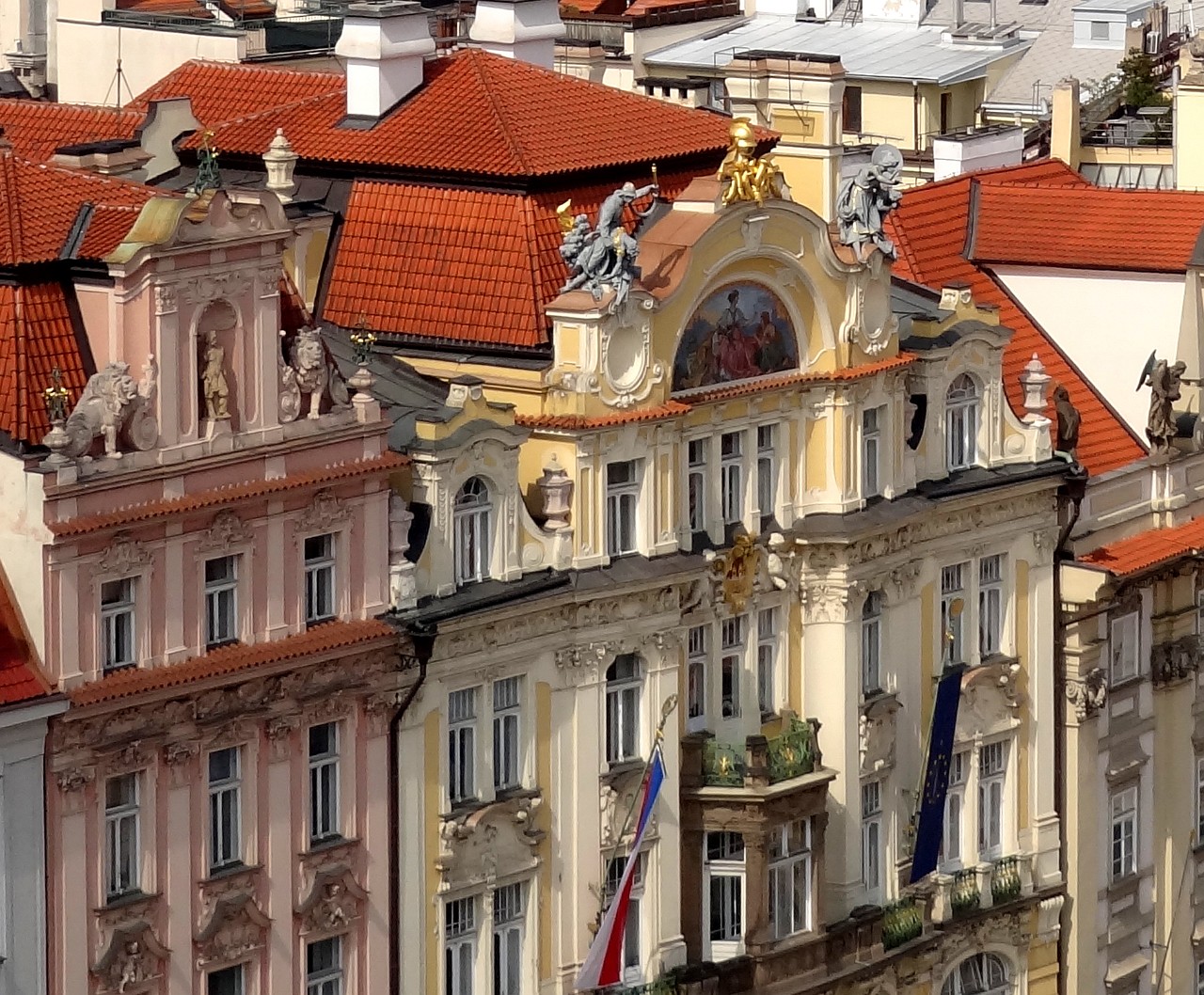
Old Town Square building facades
It’s amazing how many statues there are looking down on you from buildings in Prague!
Fred and Ginger Dancing House
Can you just imagine the swirling dress as the Dancing House does a twirl? I love the movement in the glass tower of this delightful building called the Dancing House, sometimes nicknamed Fred and Ginger for the famous dancing duo of the 30’s.
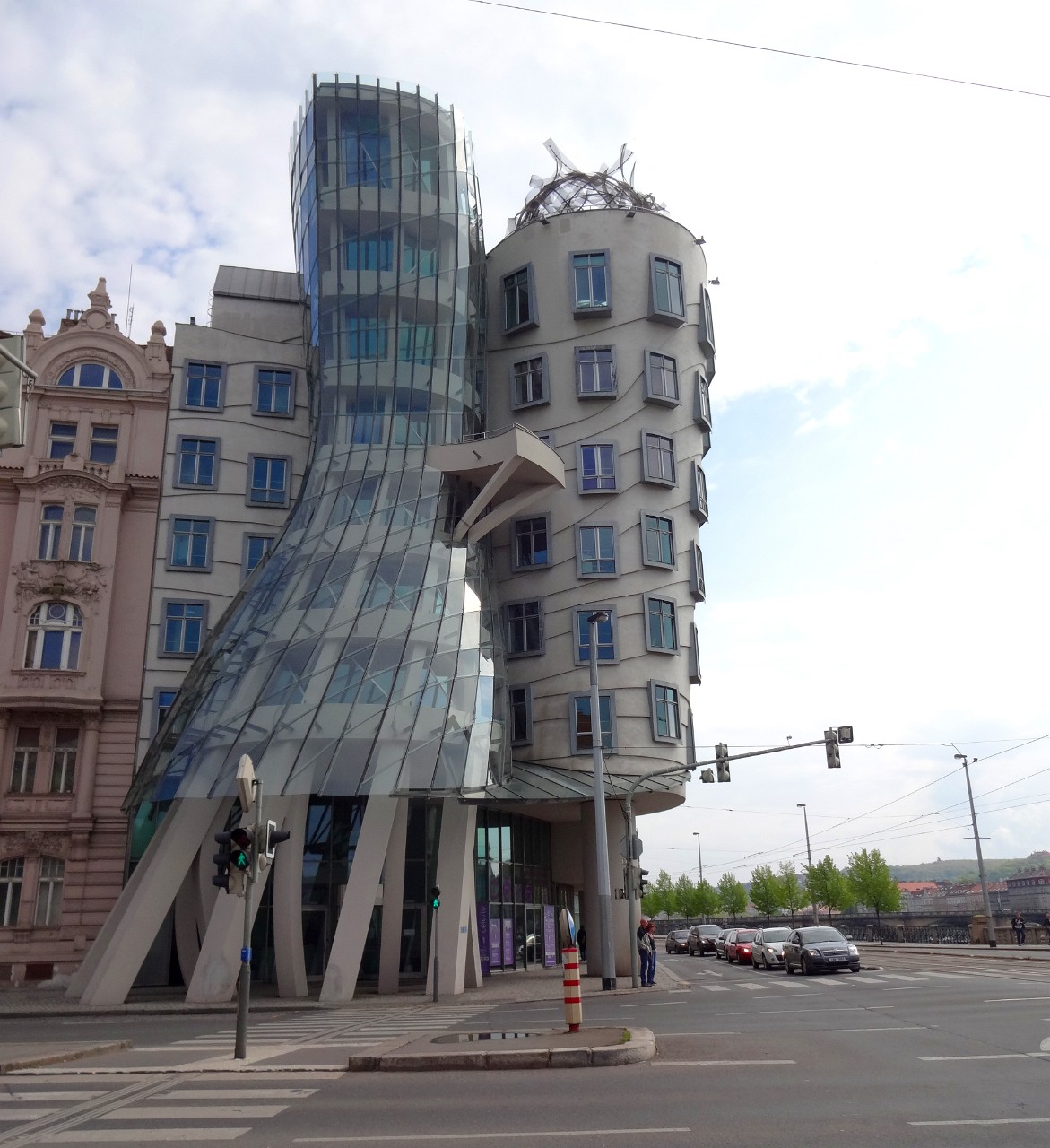
Fred and Ginger Dancing House
Co-designed by Czech Vlado Milunić and Frank Gehry (of the Bilbao Guggenheim fame for one), the style is known as “deconstructivist” for it’s unusual shape. Don’t worry, no Art Nouveau or Baroque buildings were destroyed while building this in 1992-1996, it was built on a site of a house destroyed in the 1945 US bombing of Prague, a terrible navigation mistake. What do you think of this style?
Exploring Prague Wrap-up: I love all the architectural treasures in Prague, but what says Magical Prague to me most is seeing all the dark and brooding medieval towers lit at night with their distinctive spires, like the tower on the bridge, the Powder tower, and this one – the gothic Old Town Hall Tower with the fascinating Astronomical Clock.
Astronomical Clock at night
Děkuji! (Dya-koo-yee) – Thank you for all your treasures Prague!
Follow me on my Instagram account Travelknowing for more Travel series, after all…knowing is everything!







